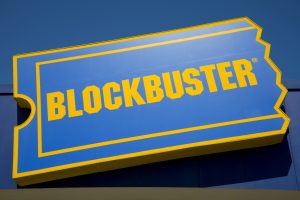It’s often said in passing, with a shrug, a smile or a note of pride: “This is the way we’ve always done it.”
It sounds harmless. Loyal, even. But in my experience—as a consultant, executive, and advisor across decades and industries—those eight words are rarely neutral. They’re often the first sign of deeper, systemic rot.
I’ve heard that phrase, or a version of it, at multinational corporations and small family-run businesses, from the Midwest to the coasts. It tends to surface when something isn’t working—costs are up, performance is down, customer satisfaction is lagging—and someone asks a simple question: Why do we do it this way?
The answer is usually some version of tradition disguised as necessity:
- “It’s just how we do things.”
- “The customers expect it.”
- “Our industry is different.”
It’s often said with conviction. But when tradition becomes a shield rather than a guide, it stops being culture—and starts being risk.
In agriculture—where I’ve spent much of my career—the tension between innovation and tradition runs especially deep. The sector is, by nature, conservative. There’s pride in doing things “the right way,” which is often synonymous with “the way Grandpa did it.” But that pride can become paralyzing.
A 2023 McKinsey report found that more than 80% of agriculture companies lag in adopting data-driven operations and automation, despite clear evidence of gains in yield and cost savings. The resistance isn’t due to lack of capital or technology. It’s cultural. It’s the quiet belief that the old ways are just not good enough—but sacred.
At one large Midwest agribusiness, we discovered that procurement and inventory were still being managed in Excel spreadsheets, updated manually by siloed teams across three regional offices. The rationale? “That’s the way we’ve always done it—it’s worked for 30 years.” But it wasn’t working anymore. Supply bottlenecks were increasing, vendor relationships were strained, and margins were tightening. When we implemented a centralized, cloud-based supply chain platform, the business unlocked $1.4 million in savings and shaved days off turnaround time.
No one ever missed the spreadsheet.
In another case, a multigenerational seed company insisted on hand-labeling every outbound shipment, even as its competitors embraced automated packing and real-time tracking.
“This is part of what sets us apart,” the operations lead explained.
And for a while, it did. But over time, delivery errors increased, customer complaints spiked, and staff overtime surged. The founder’s belief in “personal touch” had become a bottleneck—one that cost them both money and trust.
This is a pattern across legacy businesses. The longer a company has been successful, the more likely it is to see its process as untouchable. Eventually, the idea that something “can’t be done another way” hardens into doctrine.
That’s when the phrase “we’ve always done it this way” shifts from comfort to warning.
There’s a useful parallel in Moore’s Law—the idea that computing power doubles every two years while costs halve. The principle has governed decades of technological progress, but it also serves as a broader truth: If your process hasn’t evolved in four or five years, someone else’s probably has.
It’s not just about microchips or code. It’s about mindset. Industries that once disrupted others now find themselves disrupted. Think of how vertical farming, AI-based crop modeling, or sensor-based soil testing are redefining what’s possible in ag production. The tools are out there—but only if companies are willing to question their assumptions.
So when I hear “this is the way we’ve always done it,” I pause. And I start asking questions. Open-ended ones.
- What problem was this process originally solving?
- What would happen if we started from scratch today?
- Who benefits from keeping it this way—and who’s burdened by it?
In my experience, the processes most fiercely protected are often the ones most overdue for reinvention. That doesn’t mean abandoning all traditions. It means honoring them enough to test their relevance.
When a business does that honestly—without defensiveness—it usually finds that progress doesn’t mean rejecting its roots. It means evolving them.
Legacy isn’t a dirty word. It’s often a company’s greatest asset. But legacy shouldn’t become a locked door. The world moves too fast. Technology, customer behavior, and market pressures shift constantly. Believing that a process is immune to those forces simply because it worked in the past is a dangerous bet.
So the next time someone says, “We’ve always done it this way,” pay attention.
It’s not just a statement. It’s a signal.
A chance to be curious. A prompt to investigate. And quite possibly, an opportunity to unlock value the business didn’t know it had lost.
It’s often said in passing, with a shrug, a smile or a note of pride: “This is the way we’ve always done it.”
It sounds harmless. Loyal, even. But in my experience—as a consultant, executive, and advisor across decades and industries—those eight words are rarely neutral. They’re often the first sign of deeper, systemic rot.
I’ve heard that phrase, or a version of it, at multinational corporations and small family-run businesses, from the Midwest to the coasts. It tends to surface when something isn’t working—costs are up, performance is down, customer satisfaction is lagging—and someone asks a simple question: Why do we do it this way?
The answer is usually some version of tradition disguised as necessity:
- “It’s just how we do things.”
- “The customers expect it.”
- “Our industry is different.”
It’s often said with conviction. But when tradition becomes a shield rather than a guide, it stops being culture—and starts being risk.
In agriculture—where I’ve spent much of my career—the tension between innovation and tradition runs especially deep. The sector is, by nature, conservative. There’s pride in doing things “the right way,” which is often synonymous with “the way Grandpa did it.” But that pride can become paralyzing.
A 2023 McKinsey report found that more than 80% of agriculture companies lag in adopting data-driven operations and automation, despite clear evidence of gains in yield and cost savings. The resistance isn’t due to lack of capital or technology. It’s cultural. It’s the quiet belief that the old ways are just not good enough—but sacred.
At one large Midwest agribusiness, we discovered that procurement and inventory were still being managed in Excel spreadsheets, updated manually by siloed teams across three regional offices. The rationale? “That’s the way we’ve always done it—it’s worked for 30 years.” But it wasn’t working anymore. Supply bottlenecks were increasing, vendor relationships were strained, and margins were tightening. When we implemented a centralized, cloud-based supply chain platform, the business unlocked $1.4 million in savings and shaved days off turnaround time.
No one ever missed the spreadsheet.
In another case, a multigenerational seed company insisted on hand-labeling every outbound shipment, even as its competitors embraced automated packing and real-time tracking.
“This is part of what sets us apart,” the operations lead explained.
And for a while, it did. But over time, delivery errors increased, customer complaints spiked, and staff overtime surged. The founder’s belief in “personal touch” had become a bottleneck—one that cost them both money and trust.
This is a pattern across legacy businesses. The longer a company has been successful, the more likely it is to see its process as untouchable. Eventually, the idea that something “can’t be done another way” hardens into doctrine.
That’s when the phrase “we’ve always done it this way” shifts from comfort to warning.
There’s a useful parallel in Moore’s Law—the idea that computing power doubles every two years while costs halve. The principle has governed decades of technological progress, but it also serves as a broader truth: If your process hasn’t evolved in four or five years, someone else’s probably has.
It’s not just about microchips or code. It’s about mindset. Industries that once disrupted others now find themselves disrupted. Think of how vertical farming, AI-based crop modeling, or sensor-based soil testing are redefining what’s possible in ag production. The tools are out there—but only if companies are willing to question their assumptions.
So when I hear “this is the way we’ve always done it,” I pause. And I start asking questions. Open-ended ones.
- What problem was this process originally solving?
- What would happen if we started from scratch today?
- Who benefits from keeping it this way—and who’s burdened by it?
In my experience, the processes most fiercely protected are often the ones most overdue for reinvention. That doesn’t mean abandoning all traditions. It means honoring them enough to test their relevance.
When a business does that honestly—without defensiveness—it usually finds that progress doesn’t mean rejecting its roots. It means evolving them.
Legacy isn’t a dirty word. It’s often a company’s greatest asset. But legacy shouldn’t become a locked door. The world moves too fast. Technology, customer behavior, and market pressures shift constantly. Believing that a process is immune to those forces simply because it worked in the past is a dangerous bet.
So the next time someone says, “We’ve always done it this way,” pay attention.
It’s not just a statement. It’s a signal.
A chance to be curious. A prompt to investigate. And quite possibly, an opportunity to unlock value the business didn’t know it had lost.



